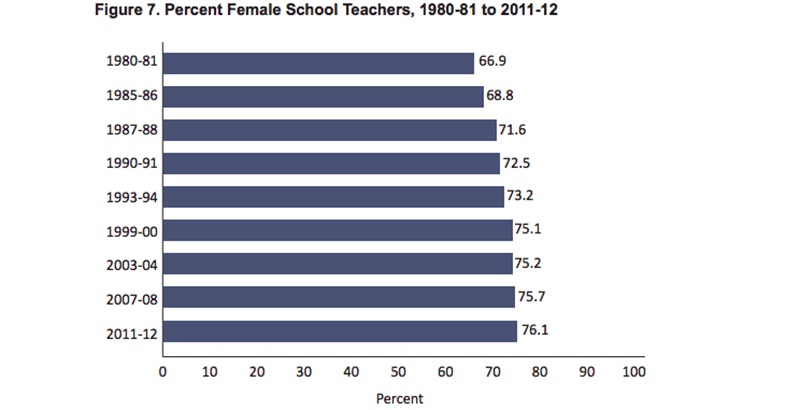Race, Gender & Teaching: The Same Indiana Recruitment Program That Failed to Attract Minority Teachers Also Skewed 85% Female

An Indiana program designed to recruit talented students to become teachers has failed to attract male and minority candidates in its first round, according to the state’s Commission for Higher Education. Observers fear that the $10 million grant scheme will do little to curb the profession’s largely white and female bent.
In its inaugural year, the Next Generation Hoosier Educator Scholarships dispensed $1.5 million in grants for high-performing students to attend public universities in exchange for agreeing to teach in Indiana public schools for five years after graduation. The four-year, $30,000-per-student awards almost cover the cost of in-state tuition at Indiana’s public universities.
Although the program directed outreach toward men and people of color, those demographics made up just 15.5 percent (31 of 200 total) and 5.5 percent (11 of 200) of recipients. Those numbers even trail the nationwide averages for male and nonwhite teachers.
Recent reports have shown that America’s teachers are disproportionately white compared to their students, particularly in urban areas where many minority communities are clustered. Additionally, research suggests that minority students perform better academically and are suspended at lower rates when exposed to at least one educator of their own ethnicity. The proportion of Hispanic students, growing at startling rates, is roughly three times as large as the share of Hispanic teachers.
But experts say that male instructors are also exceptionally underrepresented in classrooms. Women occupy 73 percent of education, library, and training jobs overall, according to the Bureau of Labor Statistics’s Current Population Survey. They hold 78.5 percent of elementary teaching jobs and an astonishing 97.5 percent of preschool and kindergarten positions. Only in high school do men begin to approach parity, accounting for 39.5 percent of all teaching jobs at that level.
That disparity has grown more extreme in recent decades, according to education researcher Richard Ingersoll. In a 2014 study for the Consortium for Policy Research in Education that measured changes to the teaching workforce over a 30-year span, he found that teachers became 15 percent more female between 1980 and 2012. While women made up two-thirds of all teachers at the dawn of the Reagan era, they accounted for more than three-quarters of the profession three decades later.

“Given the importance of teachers as role models, and even as surrogate parents for some students, certainly some will see this trend as a problem and a policy concern,” Ingersoll wrote.
The increasing predominance of women in the field, including a growing share of principal positions, contributes to a negative cycle in which men are dissuaded from earning teaching degrees because of a “pink collar” professional stigma. In turn, since female-saturated professions often offer lower wages, the absence of men may well lead to a devaluing of educators and their work.
“Women went into it without other options, and it was a low-status profession that was associated with women, and the fact that it’s now dominated by women inhibits the status from increasing,” Columbia Teachers College President Susan Fuhrman told The New York Times in 2014.
With recognition of the problem spreading, initiatives have been created to address the dearth of male teachers — and particularly male teachers of color, who are especially underrepresented. Though the Next Generation Hoosier Educator Scholarships program fell short in its initial bid to diversify the state’s teaching ranks, it could take an example from the state’s more established William A. Crawford Minority Teaching Scholarship. The Call Me MISTER program, launched as a collaboration between three historically black colleges in South Carolina, has demonstrated success persuading black male high school students to consider careers as teachers. And individual districts are thinking more seriously about devising mentorships and other strategies to attract and retain male instructors.
Get stories like these delivered straight to your inbox. Sign up for The 74 Newsletter

;)
